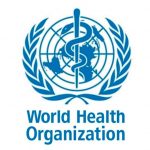 World Health Organization (WHO) vaccine advisors today recommended changing only the 2009 H1N1 component for the Southern Hemisphere’s 2017 flu vaccine, the first change in the H1N1 component since the former pandemic virus became a globally circulating seasonal flu strain.
World Health Organization (WHO) vaccine advisors today recommended changing only the 2009 H1N1 component for the Southern Hemisphere’s 2017 flu vaccine, the first change in the H1N1 component since the former pandemic virus became a globally circulating seasonal flu strain.
The newly recommended H1N1 vaccine strain, called A/Michigan/45/2015 replaces the longstanding A/California/7/2009 and is recommended to improve protection against two subclades that have emerged over the past season. However, the seasonal flu vaccines for the Northern Hemisphere, based in the WHO group’s recommendation last February, still contain the A/California/7/2009 vaccine strain.
During the Northern Hemisphere’s previous flu season, some flu experts in Europe, which experienced a late flu season, raised questions about whether newly emerging H1N1 subgroups were dampening the effect of the vaccine.
The WHO group said in its report today that an analysis of 2009 H1N1 samples collected from February to August showed that the vast majority fell into clade 6B, with most belonging to subclade 6B.1 and a small proportion, mostly from China, belonging to subclade 6B.2.
Routine testing based on ferret sera suggested that recently circulating 2009 H1N1 viruses were antigenically indistinguishable from the longstanding vaccine virus strain. Tests using human sera from vaccinated people of different age-groups, however, found a potential gap in protection among adult samples, with potentially an even more significant protection drop for children’s samples.
The WHO recommends the following for the Southern Hemisphere’s trivalent vaccines:
- For H1N1, an A/Michigan/45/2015-like virus
- For H3N2, an A/Hong Hong/4801/2014-like virus
- For B, Brisbane/60/2008-like virus (belonging to the Victoria lineage)
For quadrivalent vaccines containing two influenza B strains, the WHO experts recommended adding Phuket/3073/2013-like virus, a Yamagata lineage virus that was the second B component of quadrivalent vaccines for both the Southern Hemisphere’s current season and the Northern Hemisphere’s 2015-16 season.
Source: CIDRAP

















